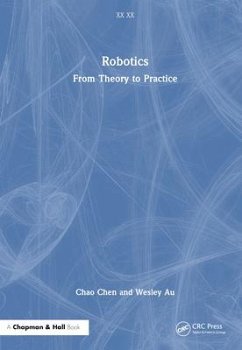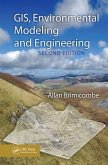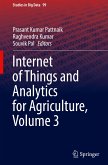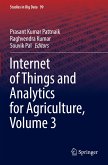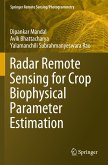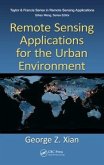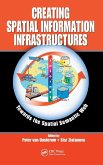107,99 €
inkl. MwSt.
Versandkostenfrei*
Erscheint vorauss. 1. Oktober 2025
Melden Sie sich
hier
hier
für den Produktalarm an, um über die Verfügbarkeit des Produkts informiert zu werden.

54 °P sammeln
- Gebundenes Buch
This book bridges the gap between robotic theory and practical applications in the modelling, planning and control of modern industrial robots.
Andere Kunden interessierten sich auch für
![Gis, Environmental Modeling and Engineering Gis, Environmental Modeling and Engineering]() Allan BrimicombeGis, Environmental Modeling and Engineering202,99 €
Allan BrimicombeGis, Environmental Modeling and Engineering202,99 €![Push Button Agriculture Push Button Agriculture]() K R KrishnaPush Button Agriculture219,99 €
K R KrishnaPush Button Agriculture219,99 €![Internet of Things and Analytics for Agriculture, Volume 3 Internet of Things and Analytics for Agriculture, Volume 3]() Internet of Things and Analytics for Agriculture, Volume 3137,99 €
Internet of Things and Analytics for Agriculture, Volume 3137,99 €![Internet of Things and Analytics for Agriculture, Volume 3 Internet of Things and Analytics for Agriculture, Volume 3]() Internet of Things and Analytics for Agriculture, Volume 3137,99 €
Internet of Things and Analytics for Agriculture, Volume 3137,99 €![Radar Remote Sensing for Crop Biophysical Parameter Estimation Radar Remote Sensing for Crop Biophysical Parameter Estimation]() Dipankar MandalRadar Remote Sensing for Crop Biophysical Parameter Estimation117,99 €
Dipankar MandalRadar Remote Sensing for Crop Biophysical Parameter Estimation117,99 €![Remote Sensing Applications for the Urban Environment Remote Sensing Applications for the Urban Environment]() George Z XianRemote Sensing Applications for the Urban Environment142,99 €
George Z XianRemote Sensing Applications for the Urban Environment142,99 €![Creating Spatial Information Infrastructures Creating Spatial Information Infrastructures]() Creating Spatial Information Infrastructures250,99 €
Creating Spatial Information Infrastructures250,99 €-
-
-
This book bridges the gap between robotic theory and practical applications in the modelling, planning and control of modern industrial robots.
Hinweis: Dieser Artikel kann nur an eine deutsche Lieferadresse ausgeliefert werden.
Hinweis: Dieser Artikel kann nur an eine deutsche Lieferadresse ausgeliefert werden.
Produktdetails
- Produktdetails
- Verlag: Taylor & Francis Ltd
- Seitenzahl: 400
- Erscheinungstermin: 1. Oktober 2025
- Englisch
- Abmessung: 254mm x 178mm
- ISBN-13: 9781032330990
- ISBN-10: 1032330996
- Artikelnr.: 69030468
- Herstellerkennzeichnung
- Libri GmbH
- Europaallee 1
- 36244 Bad Hersfeld
- gpsr@libri.de
- Verlag: Taylor & Francis Ltd
- Seitenzahl: 400
- Erscheinungstermin: 1. Oktober 2025
- Englisch
- Abmessung: 254mm x 178mm
- ISBN-13: 9781032330990
- ISBN-10: 1032330996
- Artikelnr.: 69030468
- Herstellerkennzeichnung
- Libri GmbH
- Europaallee 1
- 36244 Bad Hersfeld
- gpsr@libri.de
Associate Professor Chao Chen Associate Professor Chao Chen received his Bachelor degree in Mechanical Engineering at Shanghai Jiao Tong University in 1996, and Master and Ph.D. Degrees in Robotics at McGill University in 2002 and 2006, respectively. He received the FQRNT Postdoctoral Fellowship and worked at University of Toronto from 2006 to 2007. Chen joined the Department of Mechanical and Aerospace Engineering at Monash University in 2007, and has been teaching Robotics as a fourth-year subject since then. He also serves as the Course Director of Robotics and Mechatronics. Chen established the Laboratory of Motion Generation and Analysis, with the goal to improve the quality of life of people by smart robotic technology. His research interest is in the frontier robotic technologies with applications in space, agriculture, and medicine. Dr. Wesley Au Dr. Wesley Au received his Bachelor's degree in Mechatronics Engineering and Applied Mathematics in 2010, and then his Ph.D. in Robotics in 2015 at Monash University, specialising in robot kinematics and path planning. He then joined University of Technology Sydney as a research fellow, developing design methodologies and planning strategies for infrastructure maintenance robots, before rejoining Monash University in 2019 to lead A/Prof Chen's research team on agricultural robots. During this period, he provided teaching assistance and helped develop new coursework for Chen's Robotics courses. Wesley has since transitioned to industry-based research, joining Boeing Research and Technology Australia in 2022 to leverage his expertise in robotics in supporting cutting-edge automation research for manufacturing in the aerospace industry.
Part 1: The Fundamentals 1. Introduction 2. Spatial Transformation 3.
Direct Kinematics 4. Inverse Kinematics 5. Velocity Analysis 6. Lagrangian
Dynamics 7. Newton-Euler Dynamics Part 2: Motion Planning and Control 8.
Trajectory Generation 9. Path Planning 10. Joint Control 11. Nonlinear
Control 12. Force Control 13. Programming
Direct Kinematics 4. Inverse Kinematics 5. Velocity Analysis 6. Lagrangian
Dynamics 7. Newton-Euler Dynamics Part 2: Motion Planning and Control 8.
Trajectory Generation 9. Path Planning 10. Joint Control 11. Nonlinear
Control 12. Force Control 13. Programming
Part 1: The Fundamentals 1. Introduction 2. Spatial Transformation 3.
Direct Kinematics 4. Inverse Kinematics 5. Velocity Analysis 6. Lagrangian
Dynamics 7. Newton-Euler Dynamics Part 2: Motion Planning and Control 8.
Trajectory Generation 9. Path Planning 10. Joint Control 11. Nonlinear
Control 12. Force Control 13. Programming
Direct Kinematics 4. Inverse Kinematics 5. Velocity Analysis 6. Lagrangian
Dynamics 7. Newton-Euler Dynamics Part 2: Motion Planning and Control 8.
Trajectory Generation 9. Path Planning 10. Joint Control 11. Nonlinear
Control 12. Force Control 13. Programming
